Brotherhood of Blackheads
The Brotherhood of Blackheads (Bruderschaft der Schwarzhäupter) is a unique organization that originated in the Baltics (modern Estonia and Latvia). The brotherhood united unmarried merchants, shipowners and other artisans, as well as teachers and doctors. The married members of the brotherhood were automatically excluded from its membership.
Mission
The main purpose of the brotherhood was to spend time together, but the brotherhood also took on the responsibility of participating in the protection of cities from enemies. In Tallinn, members of the Brotherhood of Blackheads pledged to deploy a horse company of up to 300 horsemen in an attack and act as a fire brigade. In peacetime, 6 armed horsemen from the fraternity patrolled the inner perimeter of the city wall of the lower city every night. It was considered a special privilege to wear weapons, and later lat.
According to legend, the Brotherhood of Blackheads originated from a group of foreign merchants who participated in the defense of Reval during the St. George's Night Uprising (1343-1345), when the indigenous population of Estonia tried to destroy the Germans and Danes and get rid of violent Christianization.
The uprising with the help of the knights of the order was suppressed.
The very first documented mention of the Brotherhood of Blackheads is in the agreement with the Tallinn Dominican Monastery on March 28, 1400. Under this agreement, the brotherhood donates vessels, an altar and other items to the Church of St. Catherine, and the Dominicans undertake to hold services in front of the altar, blessing the souls of the members of the brotherhood.
On September 12, 1407, the Tallinn City Council approved the charter of the Brotherhood, also known as the Great Right. The approval of the Charter of the Brotherhood in Riga dates back to 1416.
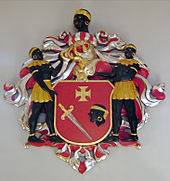
The patron saint of the Brotherhood of Blackheads is the black Egyptian Christian Saint Maurice or St. Mauritius, whose head is depicted on the coat of arms. Whether the patron saint was chosen because of the name or whether the saint precedes the name remains unclear.
There is a version that the name of the brotherhood came from the black headdresses they wore during the fighting.
In 1526, the brotherhood presented the Tallinn City Council with 8 stone-throwing machines, 20 gun carriages and 66 small-caliber guns. Money was donated for the manufacture of guns for Narva and it was agreed that the coat of arms of the Blackheads will be on all guns.
During the Livonian War (1558-1583), members of the Brotherhood of Blackheads in Tallinn participated in many battles and successfully helped defend the city from the Russian troops who unsuccessfully besieged Tallinn in 1570-1571 and 1577.
Famous and well documented the battle with the participation of members of the brotherhood was the battle during the Livonian War (1558-1583) against the Russian detachment at the walls of Reval on September 11, 1560.
Twice a year, the brotherhood celebrated the main holidays: from December 24 to January 10, the end of navigation, Christmas and New Year, and from the beginning of Easter until the beginning of navigation, the second holiday.
Both celebrations began with an official meeting, at which organizational issues were resolved, and continued with feasts, dances and festivities that covered the entire city.
Members of the brotherhood were the first in the Baltics to install and decorate the Christmas tree, which is confirmed by documents from 1441, 1442 and 1514.
At first, the Christmas tree was installed in the brotherhood house, and at the end of the holiday it was taken out to the Town Hall Square, where dances were arranged around it. Then the spruce was set on fire.
In 1584, the pastor and chronicler Balthazar Russov described the established tradition of installing a decorated fir tree in the market square in Tallinn, where young people "went with a herd of girls and women, first sang and danced there, and then set fire to the tree."
The first mention of a similar custom, as the installation of spruce by the brotherhood in Riga, dates back to 1510.
During these holidays, new members were admitted. An unmarried man could become a member of the brotherhood, including a foreigner who lived for some time in the city, attended the brotherhood's feasts and was recognized as worthy.
An exception was made once in 1711 for Peter I.
Later, Paul I and Alexander I also became members of the brotherhood.
The new member of the brotherhood took an oath and his name was entered in the book of the brotherhood.
All members used their tall and slender goblets, known as "deer's legs," to drink to the health of their new brother. For a while, newcomers - members of the fraternity served the "older" brothers at the table.
All relationships between brothers were strictly regulated, and any violation was punishable by a fine, be it an insult, physical abuse between brothers or a pass without a valid reason for solemn dinners and church services.
Members of the brotherhood in Tallinn had free access to the Town Hall, which they could use for their meetings until 1540, when they were expelled from there after a conflict between the brotherhood and the Great Guild.
In the XNUMXth century, the Brotherhood of Blackheads organized a colorful city holiday - "May Count", symbolizing the arrival of spring. The fun lasted a week, with a banquet on Monday, and on Tuesday the members of the fraternity went out of town, where they competed in horse racing, fencing and archery. The winner chose any of the girls he liked for the May Countess, after which both of them returned to Tallinn with honors. On this day, according to established tradition, the "May Count" had the right to release one prisoner, whom he could meet on the way to the building of the Great Guild.
One of the most known members of the brotherhood, albeit former, was Ivo Schekenberg.
House of Blackheads
In 1531 the brotherhood acquired a house on Langstrasse (Pikk tänav 26), known today as the "House of the Blackheads".
In those days, it was one of the main streets of the city, which led to the seaport through the Fat Margarita tower. The house has been perfectly preserved.
The House of the Brotherhood of Blackheads is located at st. Pikk, house 28. In fact, this is not even a house, but a complex of buildings, united by one name.
The main building - house number 26 - in 1522 the members of the Blackheads Guild rented from the ratman I. Viant, and in 1531 they bought it from the owner. After the acquisition of ownership, a new hall was built in the house, which also occupied part of the territory of st. Pyhavaimu. Today it is called the White Hall.
A distinctive feature of the house of the Blackheads from other merchant houses of that time was that the hall was above the front. Usually, warehouses were located in its place.
Today the House of Blackheads is a branch of the Tallinn Philharmonic. It hosts concerts, exhibitions and other events. All halls of the House, which have preserved their authenticity and color, are rented out.
At the end of the Northern War in 1721, Livonia became part of the Russian Empire.
The Hanseatic League in Livonia lost much of its power, and the Brotherhood of Blackheads gradually transformed from a military association to a predominantly civilian organization. Although the chivalric code of honor adopted by the fraternity and the rules regarding participation in battles were generally preserved, the military importance of the fraternity gradually declined. But, despite this, the cavalry unit, mainly performing ceremonial functions, with its own uniform remained in Tallinn until 1887.
Subsequently, the Brotherhoods of Blackheads appeared in Narva, Valmiera, Pärnu and Tartu.
In addition to the Baltic brotherhoods, the Brotherhood of Blackheads is also known in Stralsund, Wismar. In addition, there is an assumption that the Brotherhood of Blackheads also existed in Novgorod. There were about 20 fraternities in total.
The equally magnificent House of the Blackheads in Riga was sold by the Blackheads in 1713.
But it was destroyed on June 28, 1941, when German troops captured Riga, and the burned down walls were demolished in 1948. In Riga, in fact, a new building of the Brotherhood of Blackheads was rebuilt.
Although it would be more correct to say “Company of Blackheads” (Compagnie der Schwarzen Häupter), as it was called in Riga.
Brotherhoods existed in Riga and Tallinn until 1940.
Many of the items belonging to the Tallinn brotherhood were donated to the art museum in 1940, and some of them are now in the Niguliste (St. Nicholas) Church.
Most of the relics of the Riga Brotherhood were exported to Germany.
In 1961, the Brotherhood of Blackheads was officially registered in Hamburg. Some sources claim that it exists there to this day.
According to German media reports, the community has been based in Bremen since 1980. This company is under the auspices of the Chamber of Commerce in Schütting on the market square. Since 1987, a separate room has been set aside for silver relics on the ground floor of the nearby Roselius Museum.
In front of the display case, two of the most important silver treasures can be seen: the statuette of St. George of Riga (left) and the ornate jug in the shape of St. Mauritius (right).
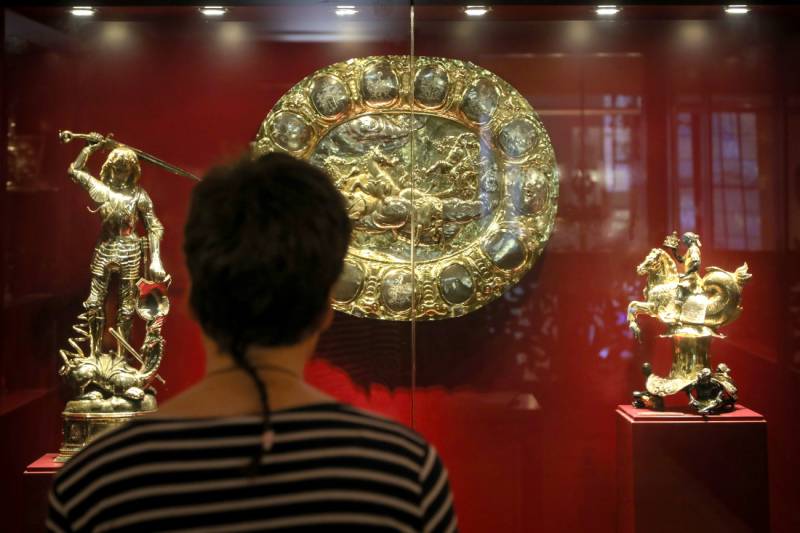
WFB/Focke Strangmann
Members of the brotherhood in Germany are no longer necessary for bachelors, but the brothers are still a male company, and at the end of 2019 there were about 25 of them.The youngest of them is a little over 40, the oldest is over 80.
According to Estonian media reports, Estonia has an NGO called Brotherhood of Blackheads, which has been in litigation with the city authorities since 1991. The subject of the dispute is the building of the Brotherhood of Blackheads.
Its representative Jssi Pärnpuu said that there are about 70 members in the society and half are German citizens.
Brotherhood's wish is joint management of the building on ul. Pikk 26 together with the city, according to the representative of the brotherhood.
But the city authorities strongly disagree with this.
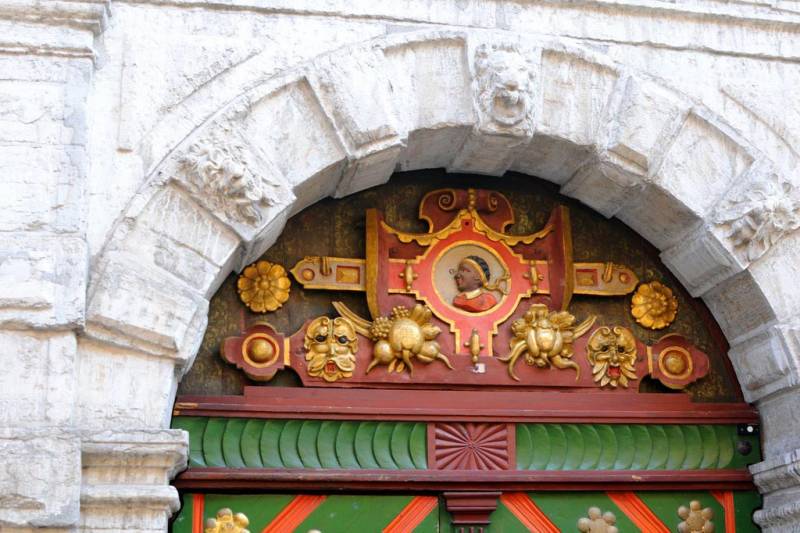
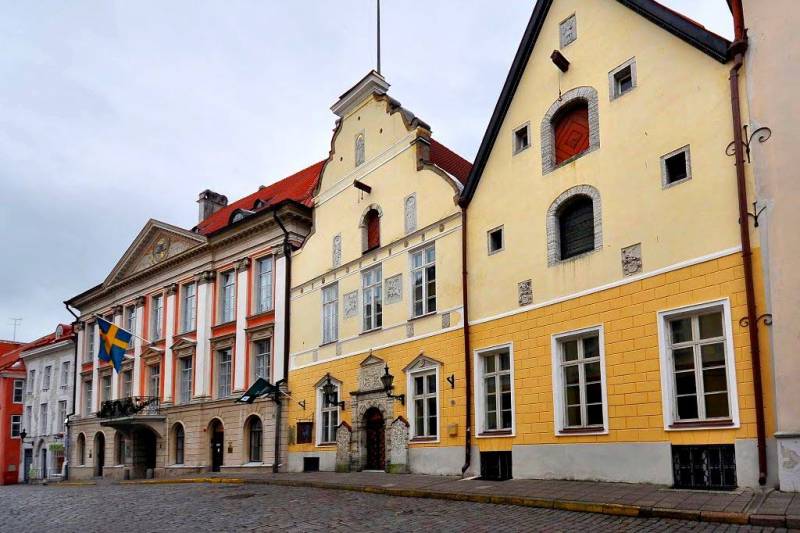
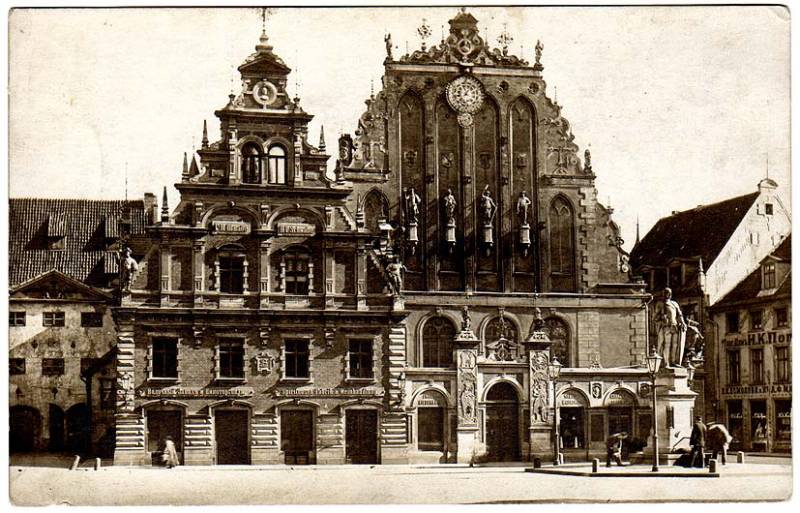
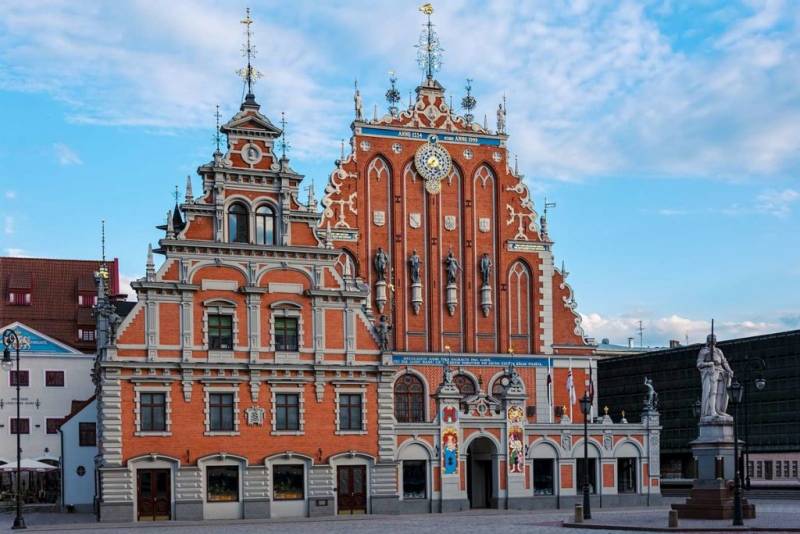
Information